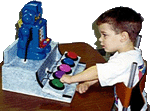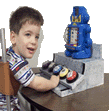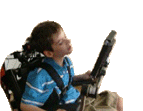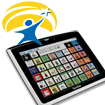|
TF-02227
|
Mini Matchers 1 Whos Hiding? Things
that Go Together and Opposites will encourage users to develop basic
and early literacy skills. Students can select from two different
activity types (Which piece? and Which pair?) to complete simple two-piece
puzzles that animate when answered correctly. Activities are
self-correcting, so all students can enjoy a feeling of achievement.
Three topics to choose between:
- Find the Letter Match the
upper and lower case letters. This activity can be
played using either letter names or letter sounds. The
learning objectives are:
- Practise recognition of the lower and upper-case
letters of the alphabet and consolidate knowledge of
the alphabet
- Practise observation skills
- Find the Word Piece
together the letters to make a simple word. The learning
objectives are:
- Learn and consolidate the spellings of common
words (maximum of five letters)
- Practise observation skills
- Use pictures as an aid to form the words
- and Find the Rhyme Match
the pieces to make a pair of simple rhyming words. The
learning objectives are:
- Practise observation skills
- Begin to learn about rhyme and consolidate the
concept of rhyme
- Develop vocabulary
Two Activity Types
The program has two different activity types which are used across
the three topics:
- Which piece? In this activity the question is presented
with one piece of the puzzle and then the student has to find
the answer piece from a choice of three pieces.
- Which pair? In this activity three pairs of pieces are
presented and the student has to choose the pair that matches
correctly.
Features
- Clear interface and attractive images
- Full speech support throughout
- Mouse and switch accessible
- Custom pointer
- Optional reward screens.
Age range:
Ideas targeted:
- Early concepts
- Literacy
- Switch use
Accessibility:
- Mouse/ Trackball/ Joystick
- Keyboard
- Single Switch
- Multiple Switches
Minimum system requirements:
- PC: Microsoft Windows Version 98 or later,
Pentium 233 MHz processor, 64MB RAM, 800 x 600 screen
resolution, CD-ROM drive, 16 Bit colour and soundcard.
|
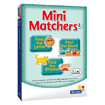 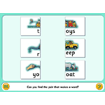 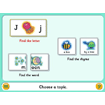
|
|

